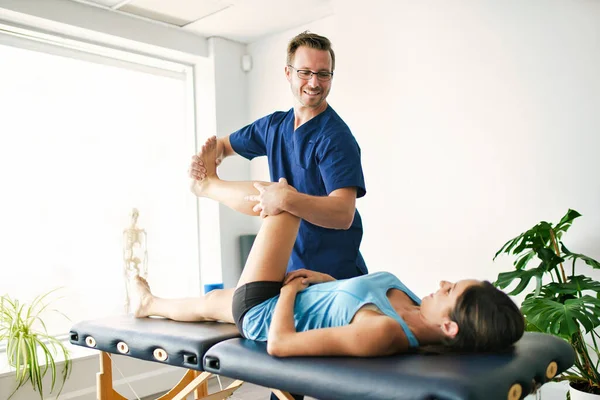The Road to Recovery: A Guide to Physical Therapy Injury Rehabilitation
Whether you are a professional athlete or a recreational enthusiast, sports injuries can be frustrating and challenging. However, there are some steps you can take to recover quickly and safely.
Physical therapists identify the root cause of pain, using exercises and here the manual techniques to alleviate symptoms this helps prevent re-injury and promotes a speedy recovery.
1. Rest and Elevation
Immediately following an injury, the most important thing to do is rest and elevate the affected area. This will reduce pain, swelling and throbbing. The RICE (rest, ice, compression and elevation) method is currently considered the best way to manage soft tissue injuries.
Elevating the injured area above heart level helps with swelling by decreasing histamine and toxin-filled blood that pools at the injury site. Use pillows to support the injury or prop it up on a couch or bed.
However, if you rest an injury for too long you can actually make it worse. The body is programmed to move and when movement is encouraged it stimulates cellular repair mechanisms. Your physical therapist will teach you how to safely load the injury to promote healing and build tissue tolerance.
2. Medications
Medications are drugs that affect the way the body works. They can be swallowed, injected, inhaled, or snorted. They can make you feel more alert or sleepy, and they can also relieve pain. Some medications are helpful to people with medical conditions, but others can be harmful.
Abusing illegal or prescription drugs can harm the body and brain. It is important to learn how to use them safely and correctly.
Prolonged drug misuse can result in negative consequences on almost all aspects of functioning – social/family/marital/friend, occupational, physical and mental health. For many individuals in recovery, achieving abstinence is their personal definition of recovery (Laudet & Storey, 2007).
3. Nutrition
When recovering from an injury, your body will need extra energy for healing. A proper diet will help you meet your caloric needs while also supplying the essential micronutrients that boost healing.
Research supports practical nutrition recommendations for reducing surgical complications, minimising deficits during immobilization and maximising return to play. These include identifying an individual’s caloric requirements, focusing on protein intake and glucose regulation with complex carbohydrates, and utilizing dietary supplements such as HMB (beta symbol hydroxybetamethylbutyrate).
Although inflammation is a natural part of the recovery process, eating anti-inflammatory foods may help reduce it. Some examples of these foods include fatty fish such as salmon and tuna, olive oil, leafy greens and berries. These foods contain inflammatory-reducing compounds such as omega-3, l-arginine and antioxidants.
4. Exercise
A physically fit body helps in reducing the risk of injury. A physical therapist will guide you through therapeutic exercises designed to improve muscle strength and endurance these exercises will gradually increase in resistance as your body adapts to the exercise.
The first phase consists of restoring joint mobility and muscle flexibility using exercises, stretches and manual techniques. This will help you get back to your normal activities without causing pain.
Cardio exercises, such as walking, can also be important during injury rehabilitation to maintain heart health and help reduce the risk of reinjury. These exercises also release endorphins, which can improve mood and energy levels. Depending on your injury, these exercises can be done with or without the aid of mechanical support devices such as crutches, canes and a walker.
5. Therapy
Physical therapy is one of the most important parts of injury rehabilitation. It helps to reduce pain and swelling, keep the area strong and flexible during recovery, and help the injury heal faster.
Depending on the type of injury, therapy may involve manual treatments like ice and heat, electrical stimulation (e-stim), or other techniques like iontophoresis to decrease inflammation. In addition to healing injuries, a physical therapist can also teach patients a new way of moving that reduces injury risk and prevents future problems.
